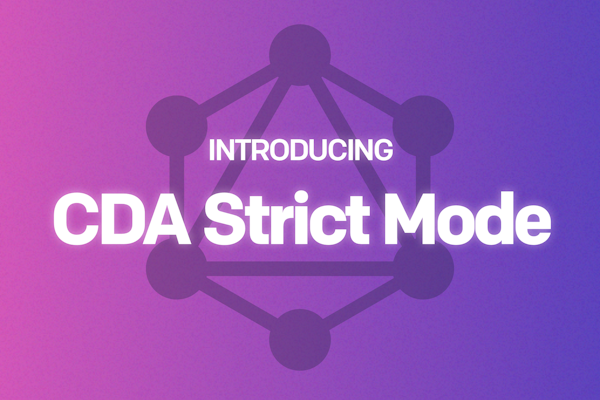Mobile CMS
Why Your Mobile CMS Should Be Headless
The mobile market has evolved at an incredible pace, and we have moved rapidly from a desktop-first world to a mobile-first world. The new paradigm requires thinking about mobile as the platform of choice. Because of the heterogeneity that underlies the mobile world, your traditional CMS may now be useless. This is why you should consider moving to a mobile CMS, which allows you to manage your content regardless of the target device through a headless approach.
First, let’s learn what a mobile CMS is, what makes it such, and why it should be headless. Then, let’s focus on which benefits the headless approach can bring to a mobile-first strategy.
What is a Mobile CMS?
A mobile CMS represents a content management system that allows you to manage, organize, and deliver content across mobile devices. These include smartphones, tablets, and smartwatches. In other words, it is a platform that your marketing, IT, and content management teams can use to keep the content consistent across applications running on iOS or Android and across mobile channels such as responsive websites and social media.
Simply put, a CMS made for mobile devices is ready for the mobile-first world we live in. Consequently, a traditional, monolithic, outdated CMS is unlikely to be a mobile CMS. This is because the mobile-first world is evolving at a pace that traditional technology cannot maintain. Therefore, you can think of it as a term to describe a modern, omnichannel, mobile-ready CMS.
Let’s now delve into what makes a CMS a perfect mobile CMS.
What Features Should a Mobile CMS Have?
These are several features that make a CMS a mobile CMS, but four are the most important ones. Let’s now have a look at the four characteristics that every one should have.
1. Support for mobile apps and SPAs, fully responsive websites, and web applications
Not surprisingly, a mobile CMS has to allow you to manage content used on mobile apps. However, mobile does not only mean apps. Every fully-responsive website, SPA (Single Page Application), and web application is part of the mobile-first paradigm. As a result, it should enable you to deliver content to any platform accessible through a mobile device equally and effortlessly. This means that it should support your communication and content strategy, regardless of the mobile online channel that will be used by the end-user.
2. Device-agnostic and platform-agnostic content management
In recent years, the mobile devices available on the market have evolved a lot. You can only imagine what the mobile devices of the future will look like. For this reason, a mobile CMS must be device-agnostic to be considered future-proof. In other terms, it should be decoupled from the frontend device and provide content in the same form for any available mobile device. Similarly, considering that the operating systems that run on these devices are constantly changing, a mobile CMS must be platform-agnostic and support your content strategy on both Android, iOS, or future platforms.
3. Accessible from mobile devices
A CMS cannot be considered mobile if you cannot use it from your smartphone, tablet, or mobile device. Although content management generally takes place on desktop devices, the mobile CMS platform itself is subject to the mobile-first paradigm and should be fully responsive. Thus, it should equip you with the ability to edit, change, and assign content anytime, anywhere.
4. Built with performance in mind
Mobile devices rely on a battery, may be slow compared to desktop devices, and typically take longer to display and elaborate data. This is why your mobile CMS should provide a lighting-fast experience, no matter which mobile device, platform, or channel. This is possible only if it has been built with performance in mind.

Why You Should Use a Headless CMS as a Mobile CMS
A headless CMS is an API-centric, fully-decoupled, frontend-agnostic content management system application that empowers you to manage, edit, and store content in one place. In other words, a headless CMS is a backend-only platform that acts as a single source of content, which is delivered through a set of APIs callable by any frontend application running on a device that can go online.
This idea is opposed to the one behind a traditional CMS, where the content cannot be separated by the application in which it is published and available. That means that a traditional CMS is monolithic and cannot be helpful in the heterogeneous scenario in terms of devices and platforms represented by the mobile world. On the contrary, a headless CMS comes with all the features presented early, and it is a mobile-device-friendly solution by definition. Learn more about the differences between a traditional CMS and a headless CMS here.
A headless CMS does not come with a built-in frontend platform that defines how the content should be presented to the end-users. Therefore, your mobile frontend development and design team is free to create the best experience based on the current goal and target device. All they have to do is retrieve the content from the headless CMS through the APIs it exposes, and start using it to produce high-quality, mobile user experiences.
With a headless CMS, your content creation team does not have to worry about how the content will be displayed and used. This unleashes their creativity and removes the concern of having to optimize the content they produced again and again to meet the requirements imposed by new platforms or devices entering the market.
Benefits of Headless for a Mobile-First World
The mobile-first movement involves several devices, platforms, and technologies. Your mobile CMS should be ready for all of them, and this is possible only in a headless scenario. Let’s understand the main reason why headless is a great choice to embrace the mobile-first paradigm.
It supports your omnichannel strategy: you might have several websites, web applications, ecommerce stores, online services, and run a multitude of marketing campaigns apart from your mobile apps. This is a common scenario, and the ideal solution would be to be able to manage the content behind all of them in a single platform. This is what omnichannel is about, and this is what headless provides you with.
It is secure: smartphones store personal, confidential, and private information about our lives. When dealing with mobile devices, you cannot afford data leaks or security issues. Fortunately, since a headless solution is backend-only, it can be kept up to date by the vendor to prevent the attackers from harnessing known security breaches. This is particularly important for public, large, enterprise companies.
It is a scalable approach: headless means having everything in one server and exposing it via APIs to clients. This is scalable by definition because the frontend applications can grow in number and size without the backend solution having to be touched. The headless approach is also the perfect solution for companies that scale internationally and require multi-site management.
DatoCMS: The Mobile CMS You Were Waiting For
DatoCMS is a headless CMS equipped with all the features presented above that a mobile CMS should have, plus many more. This makes DatoCMS an excellent headless mobile CMS, ready to fully support your mobile-first strategy or transition.
In detail, DatoCMS is supported by any online technology used for responsive and mobile technology that can call an API. Also, DatoCMS is developed with performance, scalability, and security in mind.
Conclusion
In this article, you learned what a mobile CMS is, what makes it as such, and why a headless CMS is inherently the best mobile-friendly solution. The mobile devices we use on a daily basis are evolving, and no one knows how the market of mobile devices will be in the future. What is for sure is that you cannot tie your content with mobile applications as a traditional CMS would do. A headless approach is inevitable and comes with great benefits, like omnichannel support, security, and scalability. These are just a few examples that can be brought by adopting a headless CMS, just like DatoCMS.
Thanks for reading! We hope that you found this article helpful. Feel free to reach out to us on Twitter with any questions, comments, or suggestions.
- What is a Mobile CMS?
- What Features Should a Mobile CMS Have?
- 1. Support for mobile apps and SPAs, fully responsive websites, and web applications
- 2. Device-agnostic and platform-agnostic content management
- 3. Accessible from mobile devices
- 4. Built with performance in mind
- Why You Should Use a Headless CMS as a Mobile CMS
- Benefits of Headless for a Mobile-First World
- DatoCMS: The Mobile CMS You Were Waiting For
- Conclusion


